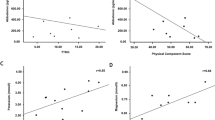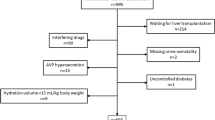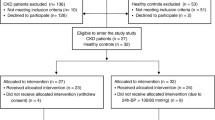Abstract
Furosemide test is a simple and useful test of renal physiology used to evaluate the capability of the collecting ducts to secrete potassium under the effect of serum aldosterone. Its behaviour pattern has been established in children and young adults but not described in very old healthy people, which we explored in this study.
Material and methods
Twenty-six healthy volunteers on a standard Western diet (50 mmol of K/day) were studied: 20 of them were young (between 17 and 40 years old) and the rest were very old (between 75 and 85 years old). They suffered from no diseases and were not on any medication. Before, during the test and 180 min after a single dose of intravenous furosemide (1 mg/kg), urine and blood samples were obtained for creatinine and electrolytes levels. From these data we calculated fractional excretion (FE) of electrolytes; serum aldosterone was measured pre and post furosemide infusion. Statistical analysis was performed by applying Student’s t-test.
Results
There was no significant difference regarding pre-furosemide (basal) FE of potassium between the very old and young group. Post-furosemide average FE of potassium was significantly lower in the very old group (27.4 ± 2%) compared with the young group (35.4 ± 9%) (P = 0.04). Even though there was no significant difference in post-furosemide peak FE of potassium value, it was reached later in the very old (120 min) compared with the young (30 min). Serum aldosterone levels were significantly higher post furosemide in both groups: 18.3 ± 12.2 ng/dl (pre) versus 32.5 ± 18.6 ng/dl (post) in the young (P = 0.007) and 69.8 ± 13.7 ng/dl (pre) versus 113.3 ± 54.8 ng/dl (post) in the very old (P = 0.04). Furthermore, all serum aldosterone values (pre and post furosemide) were significantly higher in very old people compared with young people (P < 0.001). Basal fractional excretion of sodium and chloride were slightly higher in the very old group compared with the young group (P = 0.05). Average post-furosemide FE of sodium and chloride were slightly and significantly lower in the very old (P = 0.05 and P = 0.03), respectively. However, there was no significant difference in peak post-furosemide FE of sodium and chloride values, which were reached later in the very old (120 min) compared with the young (30 min).
Conclusion
Furosemide test showed a significantly lower average post-furosemide FE of potassium value, delayed post-furosemide peak FE of Na, K and Cl and a hormonal pattern of aldosterone resistance in very old people.
Similar content being viewed by others
References
Rodriguez Soriano J, Vallo A (1990) Los diureticos como metodo de estudio de la funcion renal. Nefrologia 1:44–50
Musso CG, Macias Nuñez JF (2005) Renal physiology in the oldest old: the Sphinx remakes her question. Int Urol Nephrol 37(3):653–654
Halperin M, Goldstein M (1999) Potassium physiology. In: Halperin M, Goldstein M (eds) Fluid, electrolyte, and acid–base physiology. WB Saunders Company, Philadelphia, pp 371–400
Musso CG, Miguel R, Algranati L, Farias E (2005) Renal potassium excretion: comparison between chronic renal disease patients and old people. Int Urol Nephrol 37(1):167–170
Musso C, Liakopoulos V, Stefanidis I, De Miguel R, Imperiali N, Algranati L (2007) Correlation between creatinine clearance and transtubular potassium concentration gradient in old people and chronic renal disease patients. Saudi J Kidney Dis Transpl 18(4):551–555
Musso C, Liakopoulos V, De Miguel R, Imperiali N, Algranati L (2006) Transtubular potassium concentration gradient: comparison between healthy old people and chronic renal failure patients. Int Urol Nephrol 38(2):387–390
Lacy C, Armstrong L, Goldman M, Lance L (2004) Drug information handbook. Lexi-Comp, Hudson, pp 697–699
Rose B, Post T (2002) Uso clínico de los diuréticos. In: Rose B, Post T (eds) Transtornos de los electrolitos y del equilibrio ácido.base. Marbán, Madrid, pp 447–477
Musso CG, Luque K, Schreck C, Imperiali N, Algranati L (2007) Hyperkalemia associated to hepatitis in a peritoneal dialysis patient. Int Urol Nephrol 39(1):661–663
Musso CG (2002) Geriatric nephrology and the “nephrogeriatric giants”. Int Urol Nephrol 34(2):255–256
Musso CG, Macias Núñez JF (2008) Renal handling of water and electrolytes in the old and old-old healthy aged. In: Oreopoulos D, Cameron S, Macías Núñez JF (eds) The ageing kidney in health and disease. Springer, New York, pp 141–154
Rodriguez-Soriano J, Vallo A (1988) Renal tubular hyperkalemia in childhood. Pediatr Nephrol 2:498–509
Acknowledgements
The authors wish to thank the Epidemiology Division of the Internal Medicine Department—Hospital Italiano de Buenos Aires for its help in the statistical analysis of this trial
Author information
Authors and Affiliations
Corresponding author
Rights and permissions
About this article
Cite this article
Musso, C.G., Reynaldi, J., Vilas, M. et al. Fractional excretion of K, Na and Cl following furosemide infusion in healthy, young and very old people. Int Urol Nephrol 42, 273–277 (2010). https://doi.org/10.1007/s11255-009-9547-8
Received:
Accepted:
Published:
Issue Date:
DOI: https://doi.org/10.1007/s11255-009-9547-8




